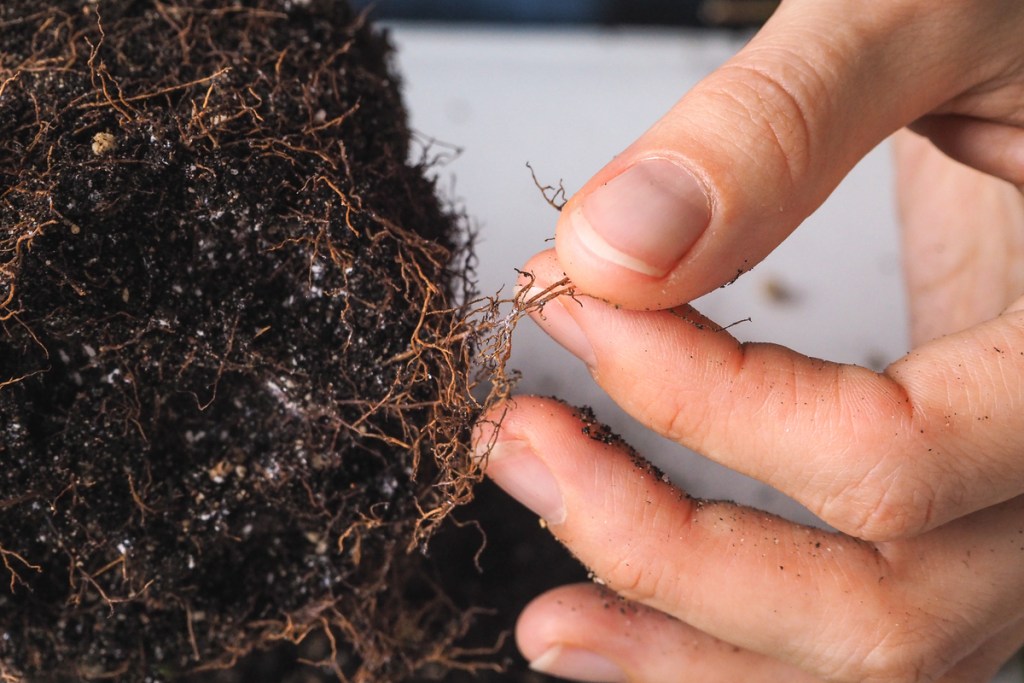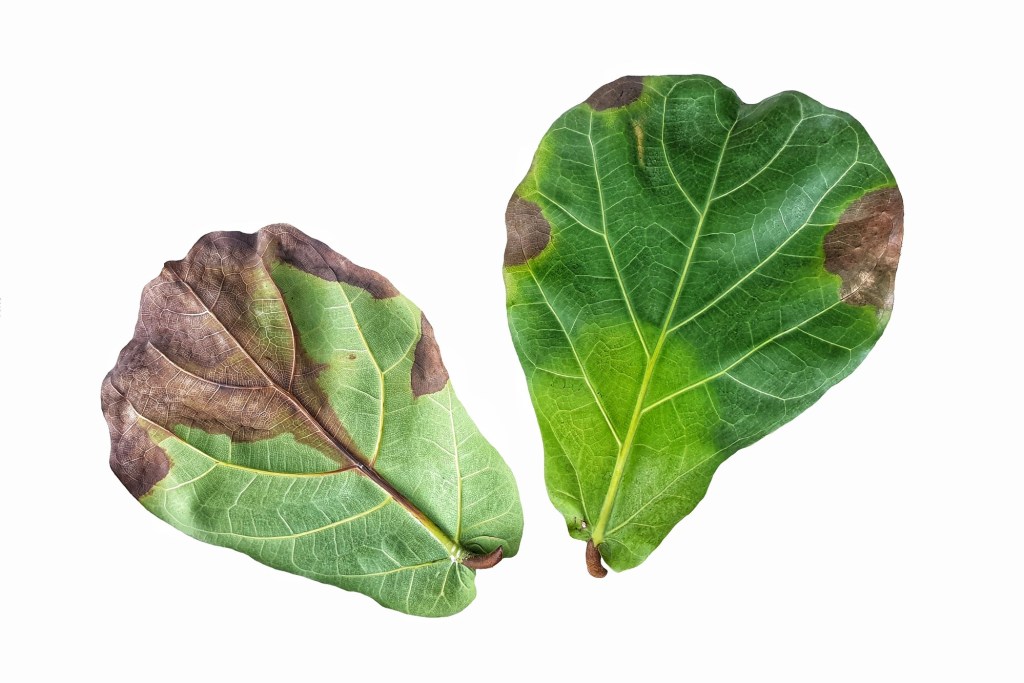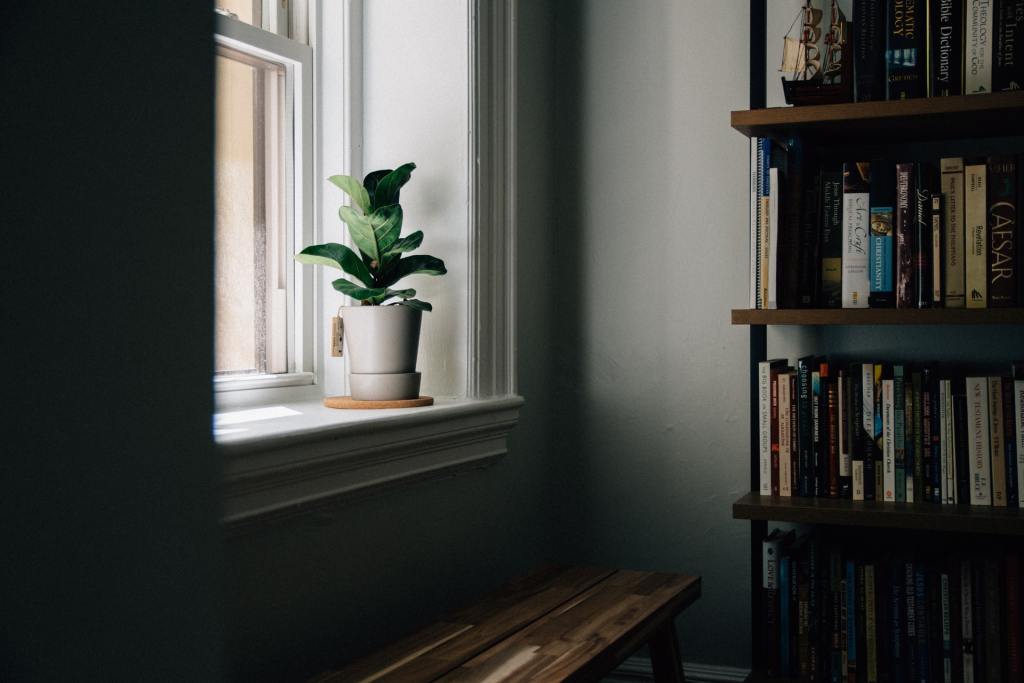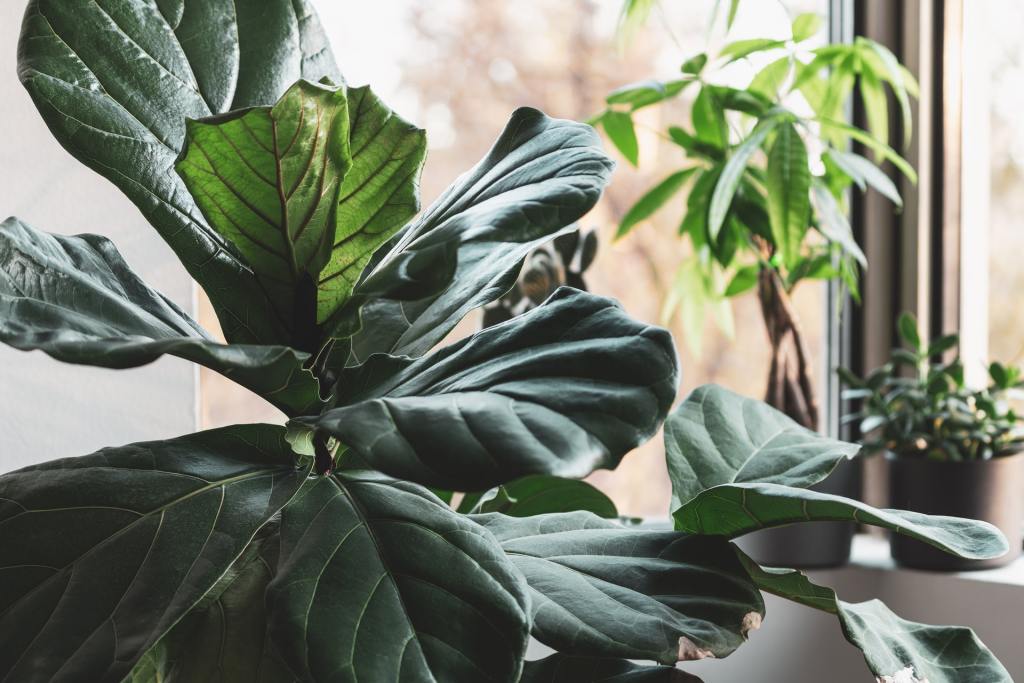Fiddle-leaf figs are beautiful little trees that make excellent houseplants. They are easy to care for in the right conditions, and they are a great way to bring a little nature into your home.
Although they can grow to roughly 50 feet tall outdoors, they stay a fairly manageable 6 to 10 feet when grown in containers. No matter what size yours is; at some point, you'll probably notice some brown spots on your fiddle-leaf fig leaves. What's all that about? Well, keep reading because we're here to help.
You may occasionally notice brown spots on your fiddle-leaf fig's leaves. This can be concerning, especially for new gardeners. Several things can cause those spots, but there are easy ways to tell what's causing them. Once you know what the cause is, you’ll be able to treat the problem accordingly.

How to identify and treat root rot
Fiddle-leaf figs need well-draining soil, as they are prone to root rot. Root rot is a fungal infection that causes the roots of a plant to turn brown and rot, leading to a weak plant. The fungus that causes root rot thrives in wet soil. Fiddle-leaf fig brown spots caused by root rot will be dark brown or black. Typically, the spots start at the base or edges of the leaves and spread inward. The leaves will also fall off of the plant. The spots are first visible on the lower leaves, then spread upward.
Step 1: Check that the pot you planted your fiddle-leaf fig in has proper drainage holes.
Step 2: Make sure the drainage holes are clear and not blocked by any debris.
If the drainage holes are clear, then the issue may be overwatering, or your fiddle-leaf fig may be planted in the wrong type of soil. If your plant only has a few small spots, it may be suffering from overwatering but not yet have developed root rot.
Step 3: To check for root rot, gently remove your plant from the pot. Roots that are brown, soft, or slimy have root rot.
Step 4: If the plant is suffering from root rot, remove as much soil as possible from the roots and trim away any rotting roots.
Step 5: Repot the plant in clean, dry, well-draining soil.
Step 6: Remove any leaves with heavy spotting, as the existing spots will not go away.

How to identify and treat underwatering
Some gardeners may overcorrect when trying to fix an overwatering issue, leading to an underwatered fiddle-leaf fig. The solution is to water your fiddle-leaf fig. Although this won’t repair the spots that have already formed, it will stop them from spreading.
Step 1: Look for brown spots that are a lighter brown than those caused by root rot. They often appear dry and may crinkle or crumble when touched or bent. These spots usually start at the outer edges and spread inward. The leaves may also wilt, especially in hot weather.
Step 2: Thoroughly soak the plant every one to two weeks. or when the top few inches of the soil are dry.
Step 3: Leaves that only have a few spots may survive, but you should remove any leaves that are severely affected.

How to identify and treat sun damage
Brown spots from sun damage, also called sunburn, sun scorch, or leaf scorch, can look quite a bit like brown spots from underwatering. They are light brown, although they may not be as dry and crumbly as spots from underwatering. Some sunburns can look white or have red or yellow tints to them. Sunburns usually occur on the tops of leaves and can encompass large, irregularly shaped sections of the leaf.
Too much direct sunlight can cause sun damage. This issue is more common in the summer, or it can happen if the plant is near a reflective surface that may amplify the sunlight. Once a leaf has been burned, it won’t return to its previous green color.
Step 1: Move the fiddle-leaf fig out of the sunlight or away from the reflective surface causing the damage to avoid future burns.
Step 2: If the brown spots on the fiddle-leaf fig are minimal, the leaf likely won’t die, although it will remain burned. It’s best to remove severely burned leaves from the plant entirely.

How to identify and treat edema
Edema is easy to recognize, as it looks quite different from other brown spots. Edema is characterized by small reddish-brown spots across the entire leaf. It’s especially common in young leaves, but it can persist once the leaf matures. The spots occur when plant cells absorb too much water and pop.
Although this sounds serious, it’s usually harmless, and the spots will go away as the leaf matures. Edema may be a sign that your fiddle-leaf fig is slightly overwatered or your watering schedule is too irregular.
Step 1: If the edema only occurs in a few young leaves, then you can safely ignore it.
Step 2: If adult leaves are showing signs of edema, then you may need to change your watering schedule to once every week or two, or when the top few inches of soil are dry.
Using this handy guide to identify the cause of your fiddle-leaf fig’s brown spots, you can determine what you need to do to help your plant recover. Identifying brown spots early can be the key to averting disaster, especially if root rot is causing the spots. However, not every brown spot is something to worry about. Identifying the cause of the spots is important; thankfully, the remedy is usually simple, and acting quickly can ensure your plant stays healthy for a long time to come.
Editors' Recommendations
- Stunning Monstera plants that you should add to your indoor plant collection
- Beyond basil and cilantro, add these unique plants to your indoor herb garden
- Your guide to rubber plant care and the best varieties to add to your home
- Want to make your pothos plant’s vines thicker? Follow this guide
- Plant of the week: Peperomia caperata – learn how to care for the emerald ripple peperomia



